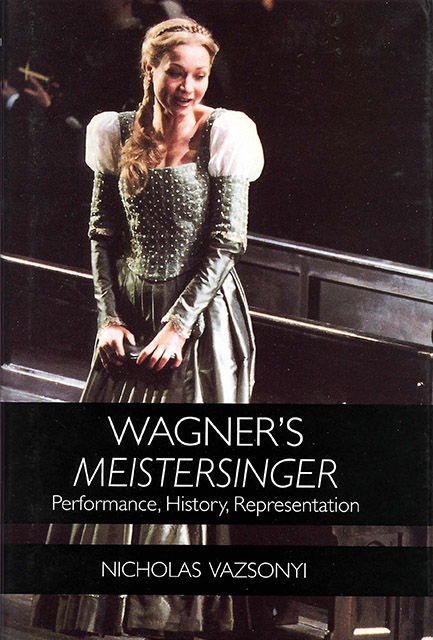4 - The Dangers of Satisfaction: On Songs, Rehearsals, and Repetition in Die Meistersinger
Published online by Cambridge University Press: 25 March 2023
Summary
Topsy Turvy is a recent British film about the operetta composers Gilbert and Sullivan, a marvelous portrayal of nineteenth-century English musical theater. In one scene we are shown a rehearsal for the singers, an early stage in the production of the Mikado when they are still learning their parts. We are shown a scene rehearsed several times. In a sense the rehearsals do not go right: the singers fail to capture the “Japanese manner.” But by the time of the first performance they more or less succeed. What is interesting about the scene is that no exaggeration is given to the audience to help it see the difference between when things go right and wrong. Though comments are made and adjustments to body demonstrated—by real Japanese women!—the audience is asked just to look and listen to the repeated act. Given anything less than the most musically and dramatically trained ears, and perhaps not even with these, listeners are unable to state the difference between the song's better and worse performances, yet they grasp it. They know when the singers get it right and respond appropriately to their success. As Wittgenstein once wrote: “Someone who understands music will listen differently (with a different facial expression, e.g.), play differently, hum differently, talk differently about the piece than someone who does not understand.”
How a director manages to convey this moment of difference deliberately in a film is a fascinating question, but it is not mine. I am interested in the claim that the differences listeners hear in musical rehearsals, the incremental improvements that differentiate one rehearsal from another, make den Unterschied ums Ganze (all the difference in the world) because grasping those little differences moves listeners, as it moves performers, from a state of not understanding to understanding. Yet in this move there is something paradoxical, because, though we come to grasp a difference between rehearsals, the very idea of a rehearsal-sequence involves our hearing the same thing over and over again. So grasping the difference also has to be accompanied by our seeing the sameness. But why, when faced with sameness, do we not just see the same thing over and over; how do we come to see the difference?
- Type
- Chapter
- Information
- Wagner's MeistersingerPerformance, History, Representation, pp. 56 - 70Publisher: Boydell & BrewerPrint publication year: 2003

